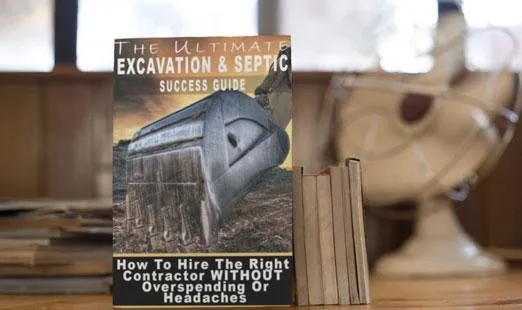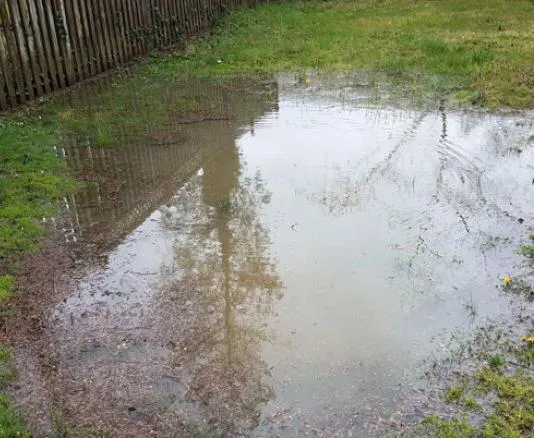Drainage Systems Near Anderson County, South Carolina
Hometown Septic Solutions LLC is Committed to superior quality and results!

AVOID COSTLY MISTAKES:
Do NOT hire an excavating contractor without first reading our free guide:
The ULTIMATE Excavation & Septic "Success Guide."

Effective Drainage Solutions for Your Property
Drainage problems can cause serious issues for homes, from flooded yards to water damage around foundations. When water is not directed away properly, it can weaken soil, create erosion, and even harm your septic system. At Hometown Septic Solutions, we provide professional drainage systems near Anderson County, South Carolina, designed to protect your property and improve how water moves through your land. Our systems help prevent costly repairs, keep your yard usable, and safeguard the value of your home.
How Can We Help?


Why Proper Drainage Matters
Poor drainage does not just create puddles in your yard, it can damage foundations, weaken septic systems, and create an unhealthy environment. Over time, standing water can lead to erosion, mold, and even structural problems that are expensive to fix. By addressing drainage early, you save yourself from larger, more expensive headaches down the road.
Homeowners in Anderson County rely on drainage systems to protect their property from heavy rainfall and shifting soil conditions. Whether you are dealing with soggy spots in the lawn, water pooling around your house, or runoff that threatens your landscaping, a well-designed system can restore balance and protect your investment.
Steps for Choosing a Drainage System near Anderson County, SC
Step 1: Property Evaluation
The first step in addressing drainage issues is a full property evaluation. Contractors should carefully assess how water flows across your land, where it collects, and how soil and slope affect drainage. This evaluation helps identify the root cause of the problem instead of just treating the symptoms.
Step 2: Planning and Design
Once the issues are understood, the next step is creating a tailored plan. A qualified contractor will design a system that moves water away from your home efficiently while blending with your yard and landscaping. Options may include French drains, surface drains, or other solutions depending on your property. A strong plan ensures the system will work properly for years.
Step 3: Professional Installation
After planning comes installation. This step requires professional-grade equipment and expertise to ensure every trench, pipe, and outlet is placed correctly. Proper installation is key — if the system isn’t built right from the start, drainage problems can continue or even get worse. Choosing an experienced contractor helps avoid costly mistakes.
Step 4: Inspection and Testing
The final step is making sure the system works as designed. A reliable contractor will test water flow, make adjustments if needed, and explain how the system functions. This inspection phase gives homeowners confidence that their drainage system is resolving the problem and protecting their property for the long term.
See Our Septic Services

✔️ Septic Services
✔️ Septic Inspections
✔️ Septic System Pumping
✔️ Septic Installations - Traditional Systems
✔️ Septic Repairs
✔️ Septic Tanks - Aerobic Systems
Quality Services Launched FAST!

✔️ Septic Tanks - Plastic/Poly
✔️ Septic Tanks - Concrete
✔️ Drain Field Replacement
✔️ Camera Inspections
✔️ Drainage Systems
What Are You Waiting For?
The Process Behind Drainage Systems Near Anderson County, South Carolina
Comprehensive Property Evaluations
We start every drainage system project with a detailed property assessment. This allows us to see where water is pooling, how it moves across the land, and which areas of your property are most at risk. By carefully studying your soil, slope, and runoff patterns, we create a plan that addresses your specific drainage challenges. This approach ensures that your system is designed to provide the most effective protection possible.
Custom Drainage Solutions
No two properties are alike, which is why we never take a one-size-fits-all approach. We design drainage systems that are tailored to your home, yard, and soil conditions. Whether you need French drains to redirect water, surface drains to handle heavy rainfall, or other solutions, we match the system to your exact needs. Custom solutions mean better results and a system that works for your property long-term.
Professional Installation Services
Proper installation is key to a successful drainage system. Our crew uses proven techniques and the right equipment to make sure each trench, pipe, and outlet is set with precision. We focus on getting the details right, because even small mistakes in slope or placement can cause big problems later. With Hometown Septic Solutions, you can trust that your installation will be handled correctly from start to finish.
High-Quality Materials
The durability of a drainage system depends heavily on the materials used. That is why we rely on high-quality pipes, fittings, and drainage components built to handle years of use. By using the best materials available, we reduce the risk of breakdowns or clogs and help your system stay reliable through all kinds of weather conditions. Strong materials make for a stronger system.
Final Testing and Adjustments
Before we consider a drainage system complete, we test it thoroughly to confirm it is working properly. We check how water flows through the pipes, make adjustments if necessary, and ensure it disperses safely away from your property. This final step gives you confidence that the system will perform during the next heavy rainfall and protect your home from water damage.
Ongoing Support and Maintenance
Even the best drainage system can benefit from occasional checkups. That is why we offer ongoing support and maintenance for homeowners in Anderson County. Whether you need seasonal inspections, adjustments after a major storm, or emergency help, our team is available to keep your system performing at its best. With long-term care, you protect your property and extend the life of your drainage system.
At Hometown Septic Solutions, we provide drainage system services in Anderson County, South Carolina, that combine careful evaluations, custom designs, precise installation, and long-term support. Our goal is to give homeowners lasting protection against water damage and peace of mind knowing their property is in good hands. Don’t wait until the next heavy rain causes costly problems, contact Hometown Septic Solutions today to schedule your drainage system consultation and safeguard your home for years to come.
Hours: 7am - 6pm Mon - Sat
Available for 24/7 Emergency Services
Address: 17711 Highway 101 S, Gray Court, South Carolina, 29645
All rights reserved | Client Support Area

